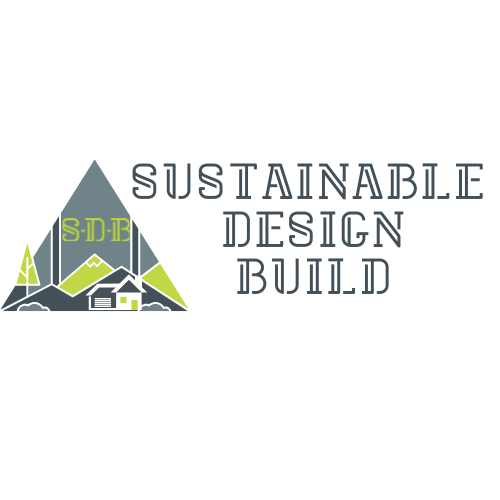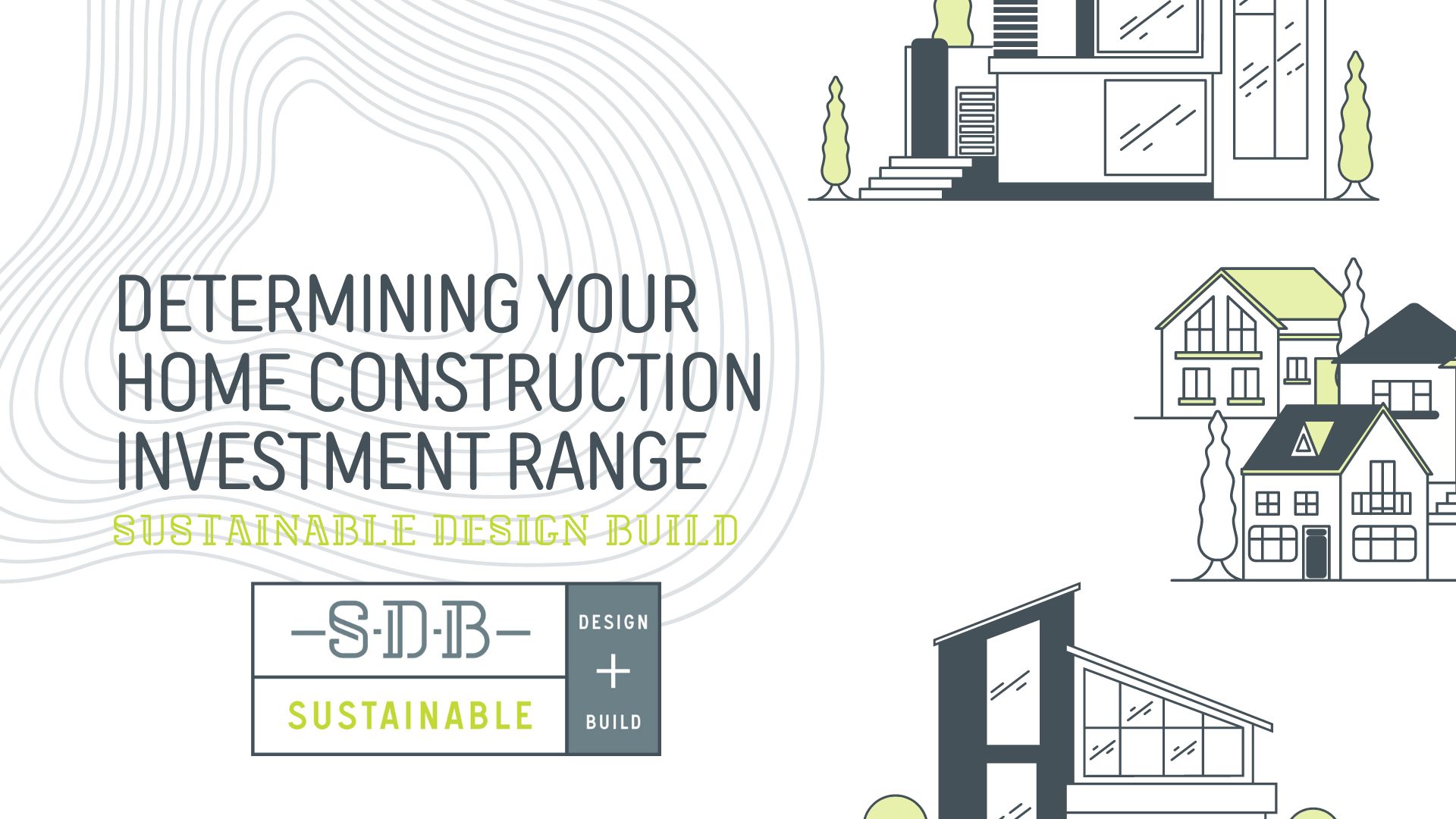Determining your investment range for home remodel projects depends on several factors, including the scope of the project, timeframe, materials chosen, finishes selected, contractors, and unforeseen conditions. Here at Sustainable Design Build, we strive to compile, streamline, and improve on the daunting task that is a home construction project. Fortunately, through our design-build process, we can manage and mitigate the common pitfalls while giving industry-leading construction services. Still, we understand that no home construction project is the same, and determining what your investment range and commitment are can be hard to nail down. Here’s a general guide to help you estimate your investment range.
Table of Contents
Home Remodel & Home Renovation
Accessory Dwelling Units (ADUs)
What are your needs, wants, and goals?
Find and Build Your Home Construction Team
DeFIning Your Scope
One of the most important items to consider when performing residential construction is defining your scope. Your project scope is planning out what parts of your home are going to be under construction. This can range from redoing a powder room to adding an entirely new home addition. Start by looking at what you need as a property owner, what does your home lack or need help in fulfilling? Moving beyond that, also think about when you want to start your home construction project and when you would ideally like it to be completed. Identifying these characteristics will help define the project scope for your home construction project and better help determine your investment range.
Home Remodel & Home Renovation
Home remodels and home renovations are always popular choices for property owners here in Denver. However, there has been a definite spike in interest in home remodeling in the last few years. After dubbing a Home Remodeling Boom, Denver and the surrounding neighborhoods are no exception. Home remodeling is perfect for Denver homes as many of the well-known neighborhoods have homes that were built in the early 1900s! Think about what needs to be done, is it a facelift per se or does your home need a completely new layout to better flow with your modern lifestyle? A home remodel project can quickly scale its larger scope type projects but is typically more on a moderate scale in size.
Home Addition & Pop Tops
A home addition refers to the construction of a new living space that is attached to an existing home or property. It typically involves expanding the footprint of the house to add extra rooms, such as bedrooms, bathrooms, living rooms, or even entire new sections like a second story.
Home additions are often built to accommodate a growing family, create more functional living space, increase property value, or simply to improve the aesthetics and layout of a home. They can range in size and complexity from small bump-outs for additional square footage to large-scale expansions that significantly increase the size of the house.
Adding an addition to a home usually requires careful planning, design, and construction, as it involves integrating the new space seamlessly with the existing structure. This may involve considerations such as matching architectural styles, ensuring structural integrity, and complying with local building codes and zoning regulations. For this reason, home addition projects are considered Major Residential Construction projects here in Denver. Which will require a significant amount of time and effort including building permits and department reviews.
Accessory Dwelling Units (ADUs)
An Accessory Dwelling Unit (ADU), also known as a granny flat, in-law suite, or secondary suite, is a self-contained living space within or attached to a single-family home or detached on the same property as the primary residence. ADUs can take various forms, including basement apartments, detached cottages, or additions to the main house.
ADUs typically include their own separate entrance, kitchen, bathroom, and living area, allowing for independent living while still being located on the same property as the primary dwelling. They can be used for various purposes, such as providing housing for family members, renting out for additional income, accommodating guests, or serving as a home office or studio.
ADUs have gained popularity in recent years as a means of addressing housing shortages, providing affordable housing options, and maximizing land use in urban and suburban areas. Many municipalities have relaxed zoning regulations and streamlined permitting processes to encourage the construction of ADUs. Denver in fact is planning to vote on a citywide provision to allow ADU construction in all Denver neighborhoods this Summer. But be aware that an ADU follows a strict set of requirements and not all homes are able support one. Even more, these types of construction projects are essentially miniature custom home projects making them a bit more expensive and resource-consuming than any other home improvement project.
Overall, ADUs offer flexibility and versatility in housing arrangements, allowing homeowners to make efficient use of their property while providing additional living space for themselves or others.
What are your needs, wants, and goals?
Determine which areas of your home are the highest priority for renovation, remodeling, and so on. Maybe your living room is outdated and needs some renovation or a basement is unfinished requiring a whole remodel. Perhaps your family is growing and you need more square footage for more legroom. Do you have relatives moving in with you or are you finally empty-nesters looking to personalize some space? Maybe you are looking to simply increase curb appeal and property value. Determine those needs, what you absolutely have to have for your home. Then determine what you want and what you can make concessions about. Ultimately, this should help figure out what your overall goals are for a home construction project and better understand your total investment needed.
Future Resale and Home Value
If you’re planning to sell your home in the future, consider how the renovation will impact its resale value. Focus on projects that are likely to provide a good return on investment and appeal to potential buyers.
Timeline
Consider your desired timeline for the project. Do you have a specific deadline you need to meet, such as hosting a family event or moving into the home? Make sure the scope of your project aligns with your timeline and any external deadlines.
Considering Long-Term Needs
Think about your long-term needs and how they might influence the scope of your project. For example, if you’re planning to expand your family, you may need additional bedrooms or living space. If you’re nearing retirement, you may want to consider making your home more accessible and age-friendly.
Pick out a Finish Level
A finish level is a way to determine if your home is going to have aesthetics from a builder-grade, custom-grade, or luxury-grade finish. This includes home remodeling items such as tile selections and hard surfaces like countertops. When doing a custom home construction project like this there are many ways to embellish or even budget. For example, a second powder room can receive standard flooring and minimal fixtures which can help open up for a more extravagant kitchen finish! Think about the level of finish you would like per room or area in your home project. Picking this overall category per space will help determine your investment range with luxury being the most expensive and builder-grade being the more economical of choices.
Builder-Grade Finishes
Builder-grade finishes are basic, standard materials and fixtures commonly used in new home construction to meet budget constraints. They offer limited options, basic functionality, and quick installation, prioritizing affordability over customization and quality. While they serve as a cost-effective option for homeowners, they may lack the durability and aesthetic appeal of higher-end finishes.
- Laminate Countertops
- Vinyl Flooring
- Stock Cabinetry
- Basic Faucets
- Standard Light Fixtures
- Standard Door Hardware
Custom-Grade Finishes
Custom-grade finishes are high-quality materials and fixtures that are specifically chosen or customized to meet the homeowner’s preferences and specifications. Unlike builder-grade finishes, which are standard and mass-produced, custom-grade finishes offer more options for customization and often higher levels of craftsmanship and durability. Here are some examples of custom-grade finishes:
- Custom Cabinetry
- Natural Stome Countertops
- Hardwood Flooring
- Premium Light Fixtures
- High-end Plumbing Fixtures
- Custom Millwork and trim
- Specialty Tile and Flooring
Luxury-Grade Finishes
Luxury finishes represent the highest tier of materials and fixtures available for residential construction and renovation projects. These finishes are characterized by their exceptional quality, exquisite craftsmanship, and exclusive design features. Here are some examples of luxury finishes:
- Exotic Nature Stone Hardsurfaces
- Custom-built Cabintery and Closets
- Imported Tile and Flooring
- High-end appliances
- Design Light Fixtures
- Custom Metalwork and Hardware
- Smart Home Intergrations
Budget Constraints
Be realistic about your budget constraints and how they will impact the scope of your project. Determine how much you’re willing and able to spend on the construction project and prioritize accordingly. You may want a home addition and a brand-new accessory dwelling unit for your property. But it’s perfectly reasonable to wait on one while the other is being built. A helpful reminder for anyone going into a large construction project is that the concept and design phases of projects will require some funds upfront. During these early stages of a project, many property owners might not have secured a loan or sufficient funding. Also, design, architecture, engineering, and permitting can be up to 20% of your total project value. So plan accordingly so no delays are made.
Find and Build Your Home Construction Team
When assembling your home construction team, collaborating with both a General Contractor and an Architect simultaneously proves highly advantageous. This approach allows property owners and homeowners to create a cohesive development team, encompassing all necessary disciplines to secure plan approval. The General Contractor offers expertise in practicality and cost-effectiveness, ensuring smooth implementation. In places like Denver, Design-Build firms provide comprehensive services, merging architectural, interior design, and general contracting under one roof.
Sustainable Design Build exemplifies this model with a GC-led design-build approach. Here, project management and supervision prioritize construction, ensuring seamless execution from groundbreaking onwards. Our process integrates engineering, architecture, and interior design services, all aligned with our core values and processes. With seasoned professionals guiding the way, our design-build process brings together essential disciplines to construct your custom home effectively.
Taking the FIrst steps
Determining the investment range for home remodel projects involves considering factors such as project scope, timeframe, materials, finishes, contractors, and unforeseen conditions. At Sustainable Design Build, we streamline this process through our design-build approach, managing and mitigating common pitfalls. Defining your scope is crucial, considering needs, timeframe, and desired outcomes. Identifying priorities, goals, and finish levels helps refine your project’s direction and estimate investment. Budget constraints should be realistically assessed, with upfront costs for design and planning accounted for to prevent delays.
Connect With Us
Planning your next renovation, or maybe you are looking to do a complete remodel for your home? Whatever the task, it can’t hurt to ask. Reach out to our team through this form.
We can schedule a free consultation and discuss everything you need to get your project moving in the right direction. Did we mention, it’s absolutely free?



Recent Comments